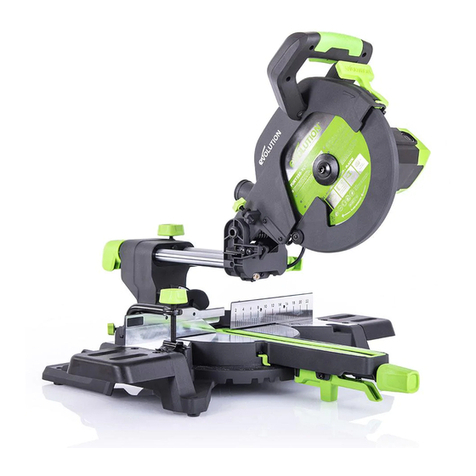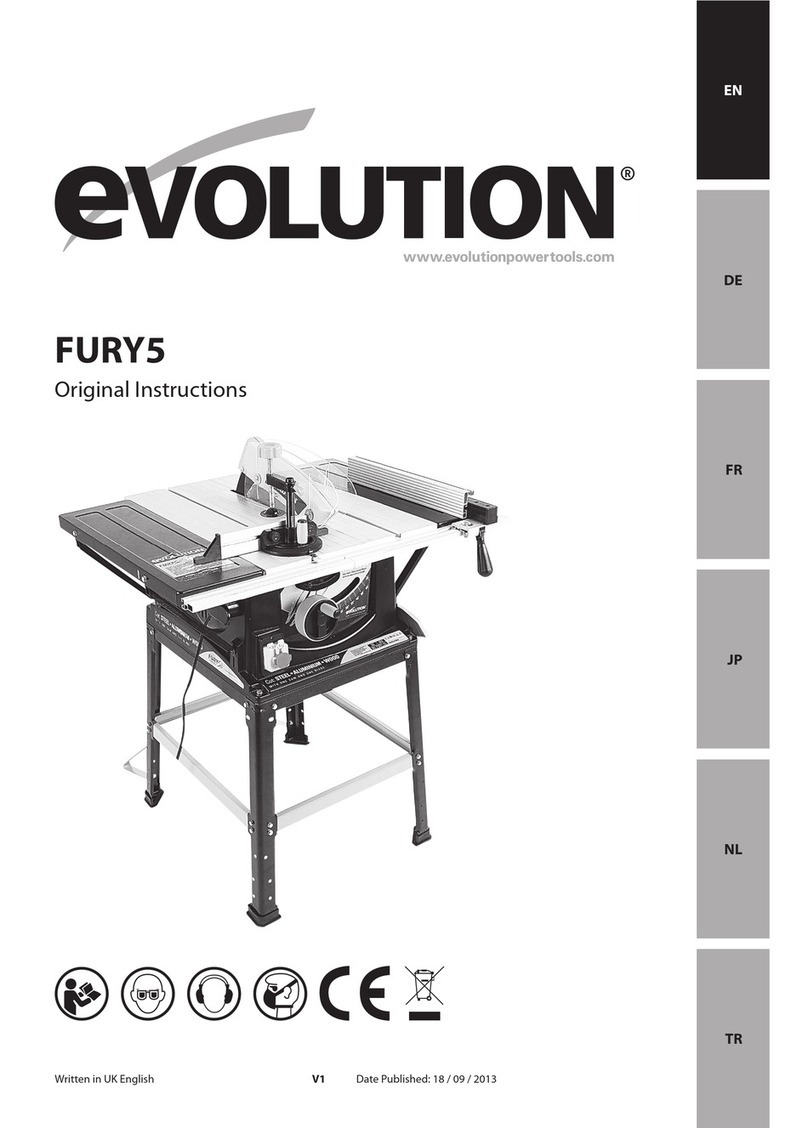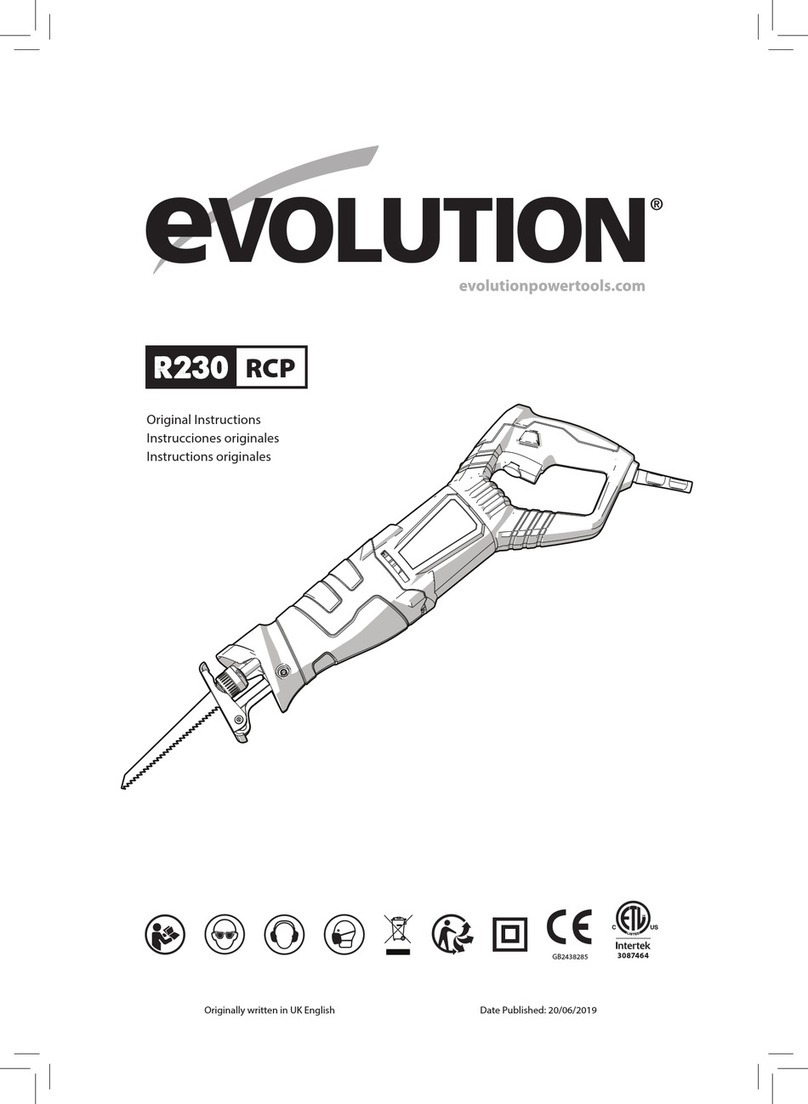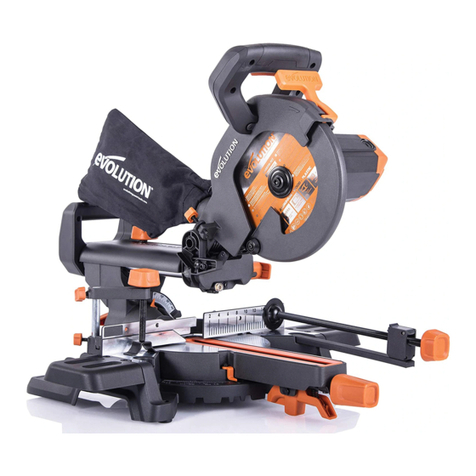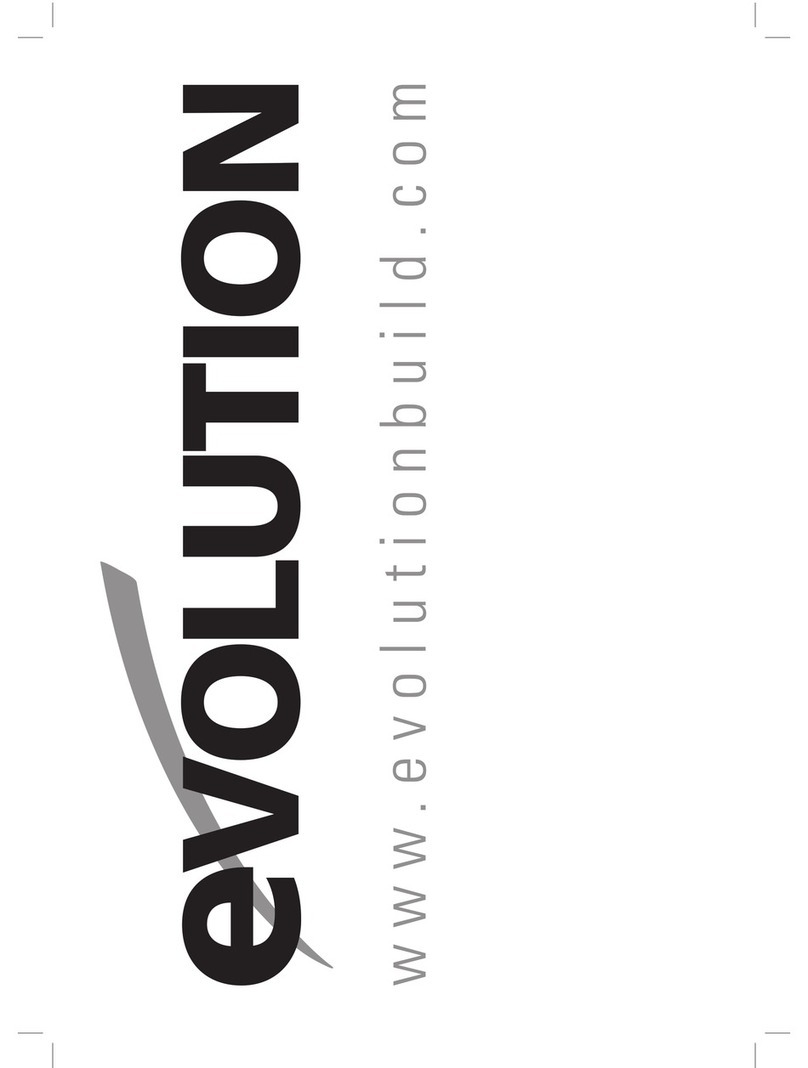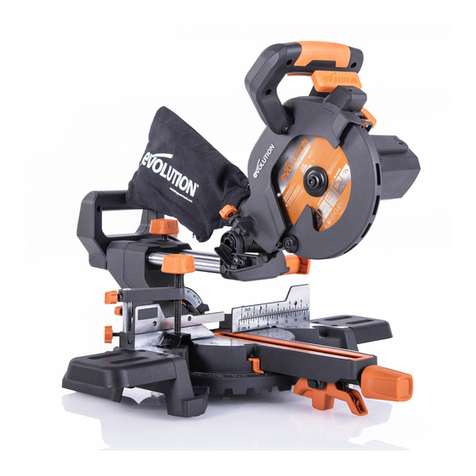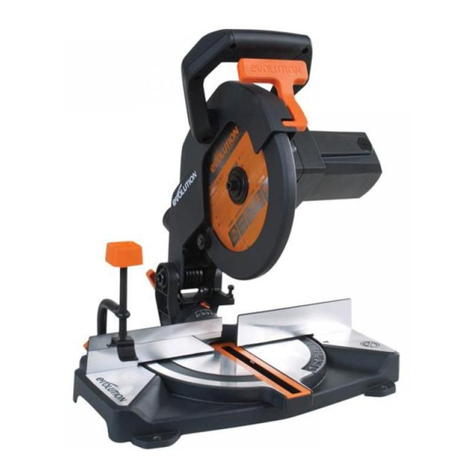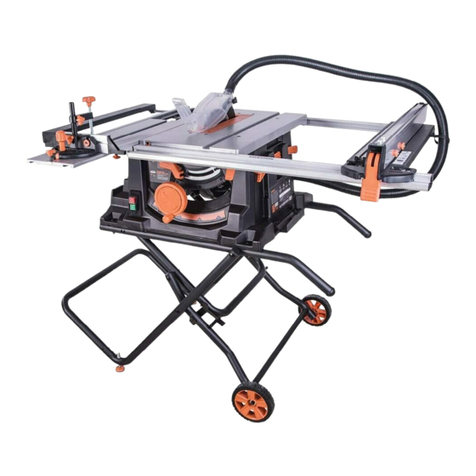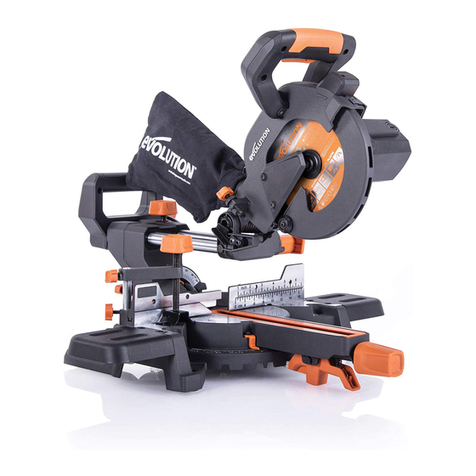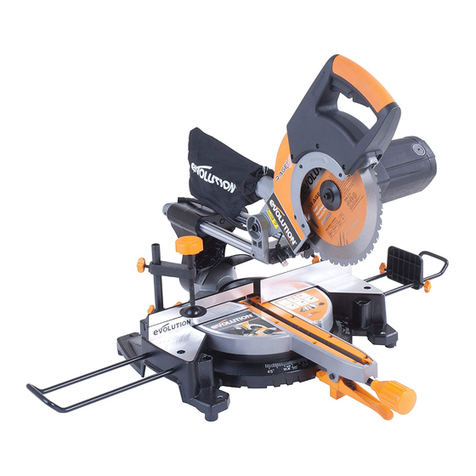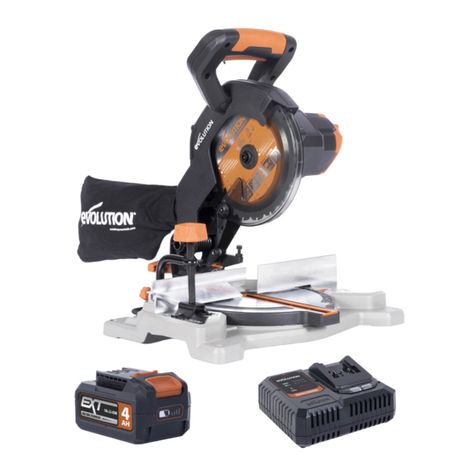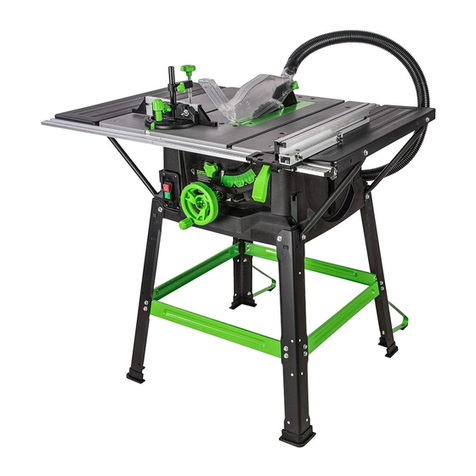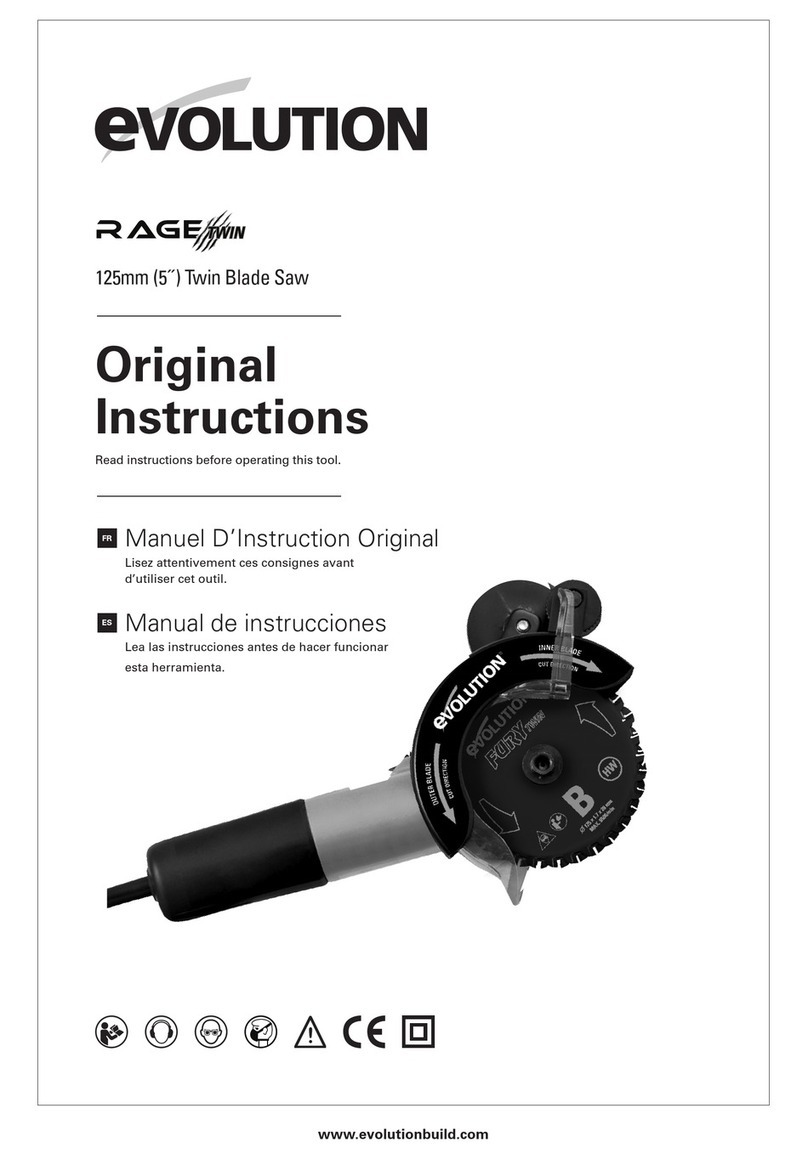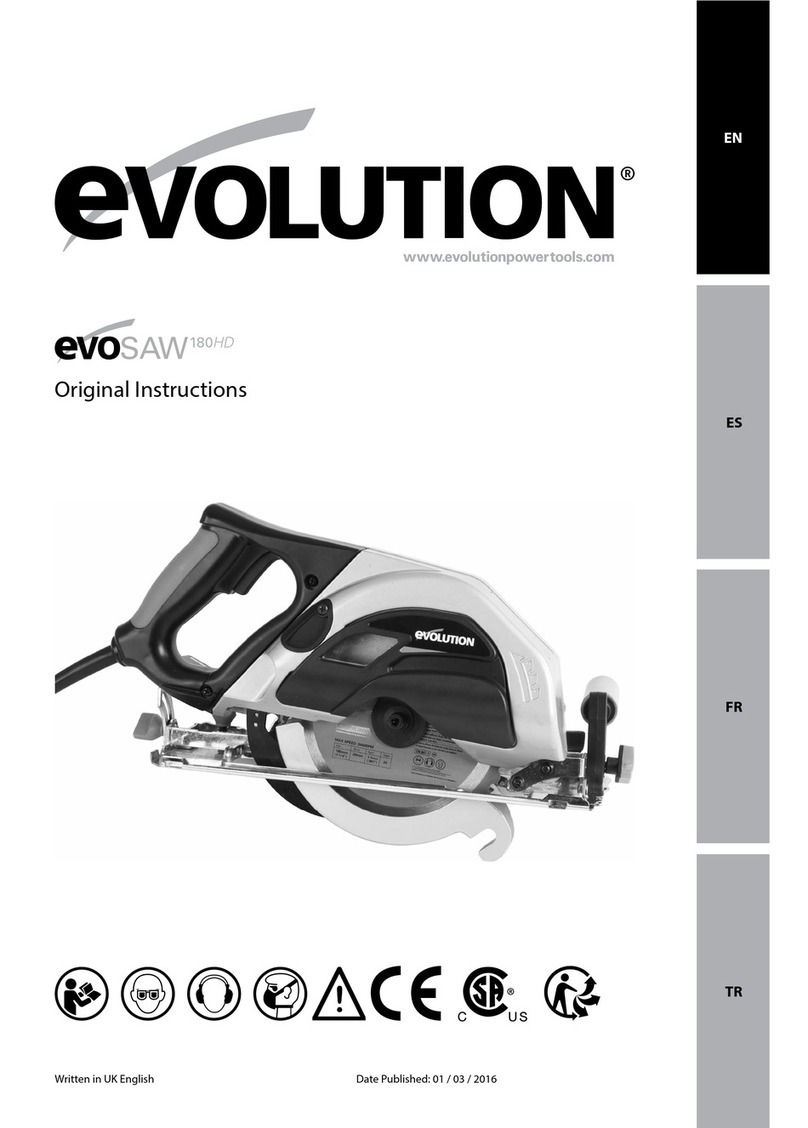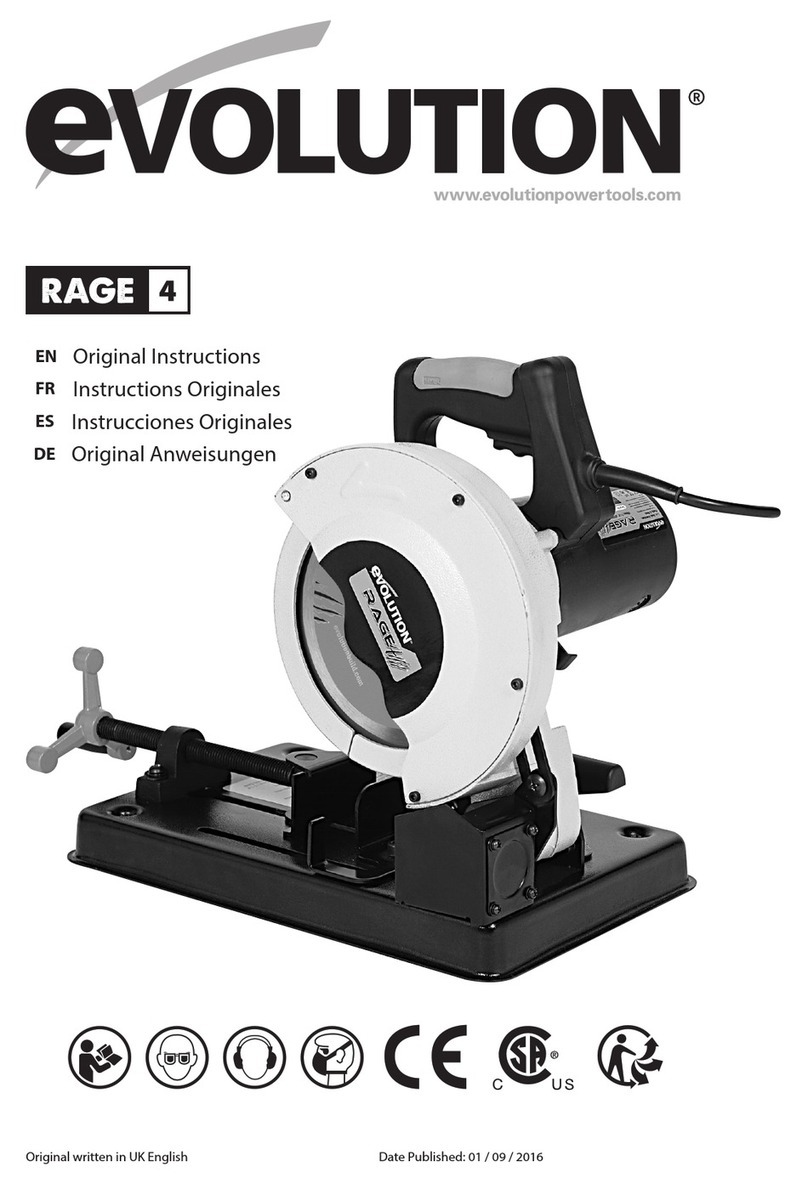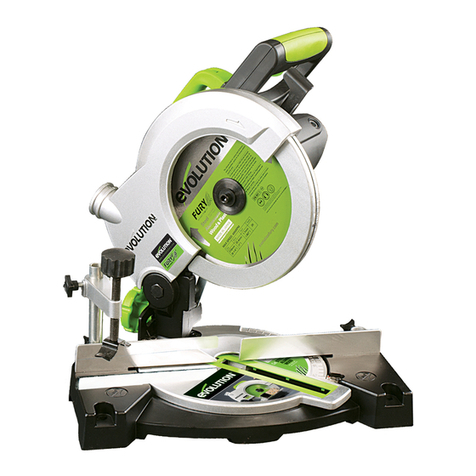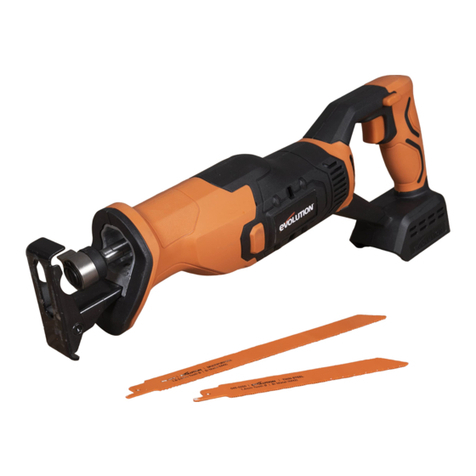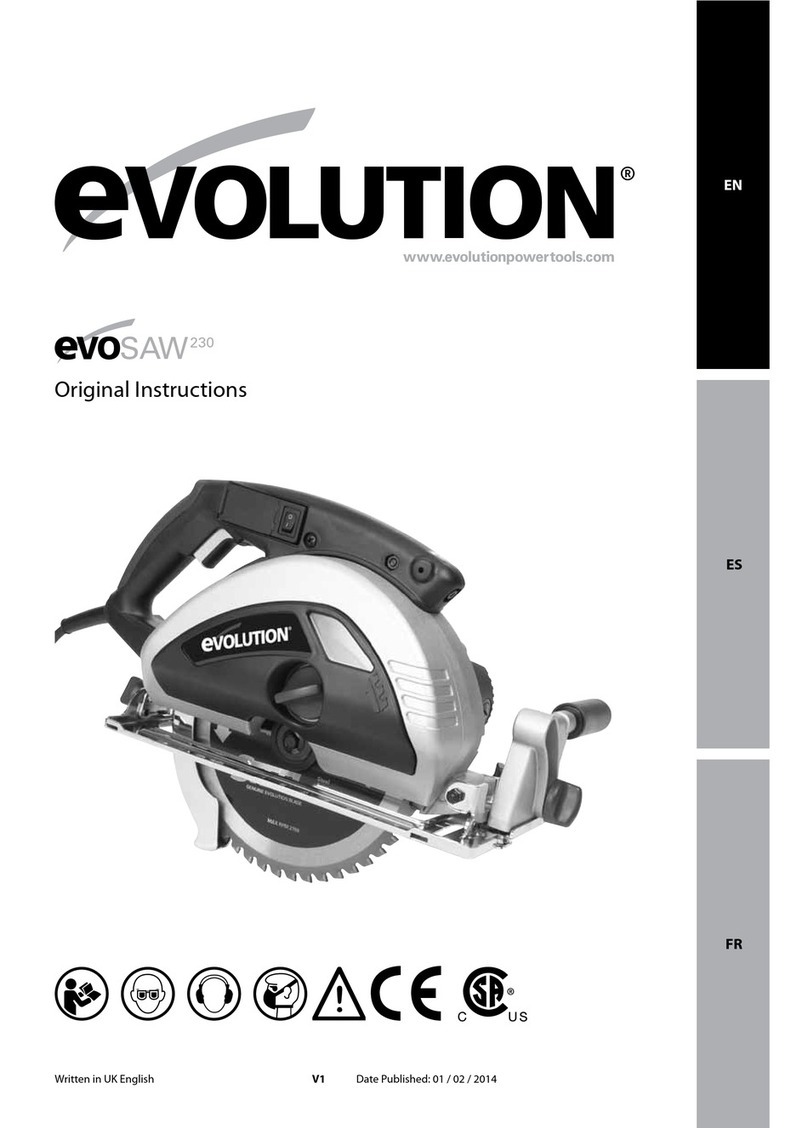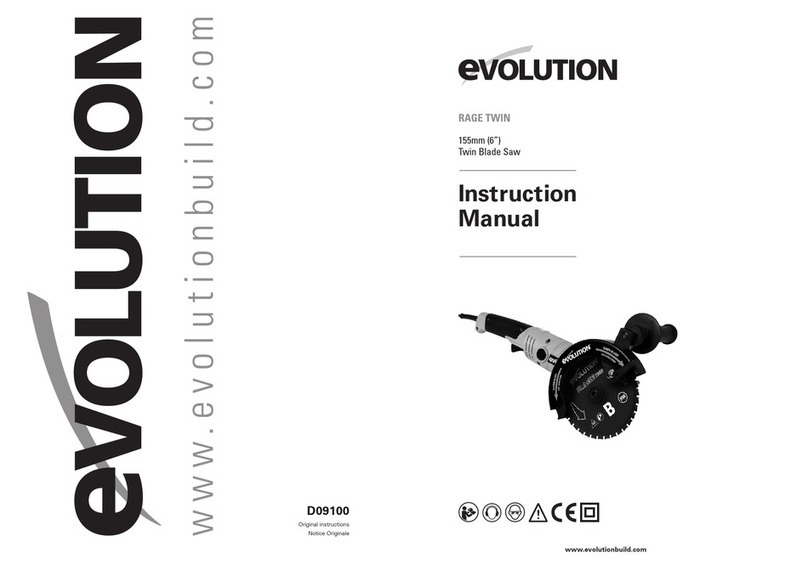8
www.evolutionpowertools.com
c) Prevent unintentional starting. Ensure
the switch is in the off-position before
connecting to power source and or battery
pack, picking up or carrying the tool.
Carrying power tools with your finger on the
switch or energising the power tools that have
the switch on invites accidents.
d) Remove any adjusting key or wrench
before turning the power tool on. A wrench
or key left attached to a rotating part of a
power tool may result in personal injury.
e) Do not overreach. Keep proper footing
and balance at all times. This enables better
control of the power tool in unexpected situations.
f) Dress properly. Do not wear loose clothing
or jewellery. Keep your hair, clothing and
gloves away from moving parts. Loose
clothes, jewellery or long hair can be caught in
moving parts.
g) If devices are provided for the connection of
dust extraction and collection facilities, ensure
that these are connected and properly used.
Use of dust collection can reduce dust-related hazards.
(2.5)
4) General PowerTool Safety Warnings
[Power tool use and care].
a) Do not force the power tool. Use the
correct power tool for your application. The
correct power tool will do the job better and
safer at a rate for which it was designed.
b) Do not use the power tool if the switch
does not turn it on or off. Any power tool
that cannot be controlled with the switch is
dangerous and must be repaired.
c) Disconnect the power tool from the
power source and/or battery pack from
the power tool before making any
adjustments, changing accessories, or
storing power tools. Such preventative safety
measures reduce the risk of starting the power
tool accidentally.
d) Store idle power tools out of the reach of
children and do not allow persons unfamiliar
with the power tool or these Instructions
to operate the power tool. Power tools are
dangerous in the hands of untrained users.
e) Maintain power tools. Check for
misalignment or binding of moving parts,
breakage of moving parts and any other
condition that may affect the power tools
operation. If damaged, have the power
tool repaired before use. Many accidents are
caused by poorly maintained power tools.
f) Keep cutting tools sharp and clean. Properly
maintained cutting tools with sharp cutting edges
are less likely to bind and are easier to control.
g) Use the power tool, accessories and
tool bits etc. in accordance with these
instructions, taking into account the
working conditions and the work to
be performed. Use of the power tool for
operations different from those intended could
result in a hazardous situation.
(2.6)
5) General PowerTool Safety Warnings
[Service]
a) Have your power tool serviced by
a qualified repair person using only
identical replacement parts. This will ensure
that the safety of the power tool is maintained.
(2.7)
HEALTH ADVICE
WARNING: When using this machine, dust
particles may be produced. In some instances,
depending on the materials you are working
with, this dust can be particularly harmful.
If you suspect that paint on the surface of
material you wish to cut contains lead, seek
professional advice. Lead based paints should
only be removed by a professional and you
should not attempt to remove it yourself. Once
the dust has been deposited on surfaces, hand
to mouth contact can result in the ingestion of
lead. Exposure to even low levels of lead can
cause irreversible brain and nervous system
damage. The young and unborn children are
particularly vulnerable. You are advised to
consider the risks associated with the materials
you are working with and to reduce the risk
of exposure. As some materials can produce
